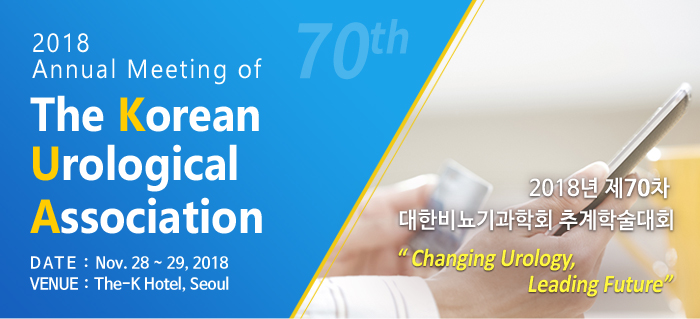|
Endourology & Stone Disease(구연)
|
(NP-041)
|
|
|
상부 요관결석 환자에서 요관경하 쇄석술 시 경피적 신루를 통한 하행성 관류의 임상적 의의 |
¹계명대학교 의과대학 비뇨기과학교실,
²가톨릭대학교 의과대학 비뇨기과학교실 |
| 정원호¹, 이동섭² |
PURPOSE We studied the clinical usefulness of antegrade irrigation via percutaneous nephrostomy (PCN) during ureteroscopic lithotripsy (URSL) in patients of upper ureter stones.
MATERIALS AND METHODS In this retrospective match-paired study, We analyzed 134 patients who were performed URSL in upper ureter stone between August 2012 and December 2017. Group 1 patients underwent retrograde irrigation, and Group 2 patients underwent antegrade irrigation. Operation time, postoperative hospital stay, analgesic needs, complications, and stone-free rate were measured for each patient after URSL according to irrigation methods.
RESULTS Mean age was 53.3 and 60.7 years, respectively (p=0.007). Stone size, laterality, and the percentage of male patients were similar. Operation time was 60.8min vs. 43.0min (p=0.002), Analgesic needs was 0.74 vs. 1.58, respectively (p〈0.001). The Stone free rate was 82.0 % vs. 95.5% (p=0.033). Urinary tract infection (UTI) was similar (p=0.303).
In the subgroup analysis of stone size over 10mm, anterograde irrigation was a shorter operation time and a higher stone-free rate. In stone size 5~10mm, the antegrade method was similar stone-free rate compared to retrograde irrigation.
CONCLUSIONS When We performed antegrade irrigation via PCN during URSL, We achieve higher stone free in a shorter operation time without increasing UTI. Therefore, If you have a PCN in URSL, It is good to utilize antegrade irrigation actively. |
  |
|
keywords : ureteral calculus, percutaneous nephrostomy, ureteroscopic surgery |
|

